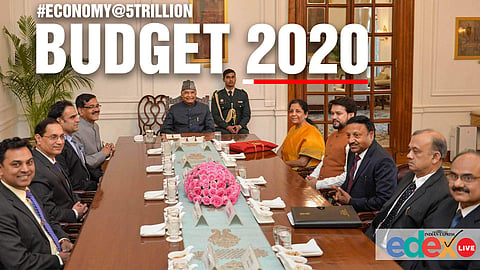

In a move to tackle the problem of shortage of doctors in the country, the Finance Minister Nirmala Sitharaman announced that all district hospitals will now have a medical college attached to it. The Minister said that the government would provide a portion of the funding as well. India currently has a shortage of 6 lakh doctors and 2 million nurses.
"There is a shortage of doctors both general as well as specialists. In order to meet the requirement, we propose that district hospitals also have a medical college attached to it. The Hospital could provide land at a concession for the college building," she said. Speaking about the funds, she said, "The government would provide viability gap finding from the centre. This way every district will have a medical college," she added.
The details about the funding would be worked out soon, she informed the house.
She also added that large hospitals with enough capacity would be able to offer courses — DNB, SNB for resident doctors under the board of examinations. "Depending on the capacity of the hospitals, the courses can be offered on the board," she said. Sitharaman also said that there were lot of opportunities abroad for teachers, paramedics and nurses but the current skill set that the students are learning doesn't match their employers requirements, "We propose special bridge courses which will provide equivalent training as abroad. There will be special training package and language training as well since the employment opportunities abroad," she explained.
Ms Savitha Kuttan, CEO, Omnicuris, a startup that provides digital skilling to medical practitioners gave her view of the new move, "The finance minister's decision to increase the budgetary allocation for education and upskilling in the medical sector was a long-expected and welcome move. At present, the doctor-patient ratio is 1:1445 against the WHO recommended 1:1000 and the nurse-patient ratio is 1:483 against the ideal 1:4. In accordance with the intention to foster more public-private partnerships, the government has already allowed medical colleges to be set up and managed as a joint venture between companies and trusts. Although the National Medical Commission was established to address the skill gap in the health sector, we expect more clarity from the government on its plan to increase graduate and postgraduate seats in medical education. To ensure that the central funds are put to quick use, the government must also ease the rules and regulations to help set up more medical institutes, which will help produce more healthcare professionals and fill the gap."
This budget is Prime Minister Narendra Modi’s second opportunity in seven months to refresh policy priorities to support an economy on a downward spiral. The Economic Survey that was released on January 31, a day before, projected India's economic growth at 6 per cent to 6.5 per cent in the next financial year starting April 1, saying growth has bottomed out. The growth in 2020-21 compares to a projected 5 per cent expansion in 2019-20.
Weak global growth impacting India as well as investment slowdown due to financial sector issues had led to growth dropping to a decade low in current fiscal, said the survey, adding 5 per cent growth projected for 2019-20 is the lowest it could fall for now.
The survey that sets the premise of the Union Budget, said that along with efforts for generating additional employment, special focus has been on improving quality of jobs and formalisation of the economy. The share of regular wage or salaried employees has increased by 5 percentage points from 18 per cent in 2011-12 to 23 per cent in 2017-18. In absolute terms, there was a significant jump of around 2.62 crore new jobs with 1.21 crore in rural areas and 1.39 crore in urban areas in this category.
The survey also introduced Thalinomics to Indians — affordability of Thalis vis-à-vis a day’s pay of a worker, which has improved over time, indicating improved welfare of the common person. The survey stated that affordability of vegetarian Thalis improved 29 per cent from 2006-07 to 2019-20 while that for non-vegetarian Thalis by 18 per cent.
